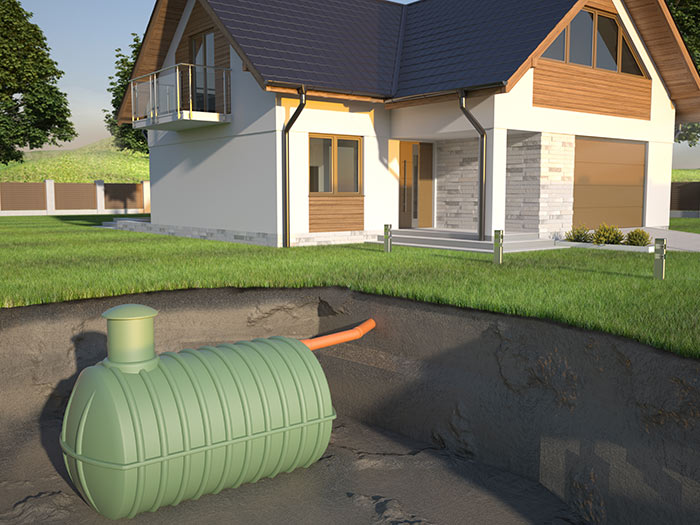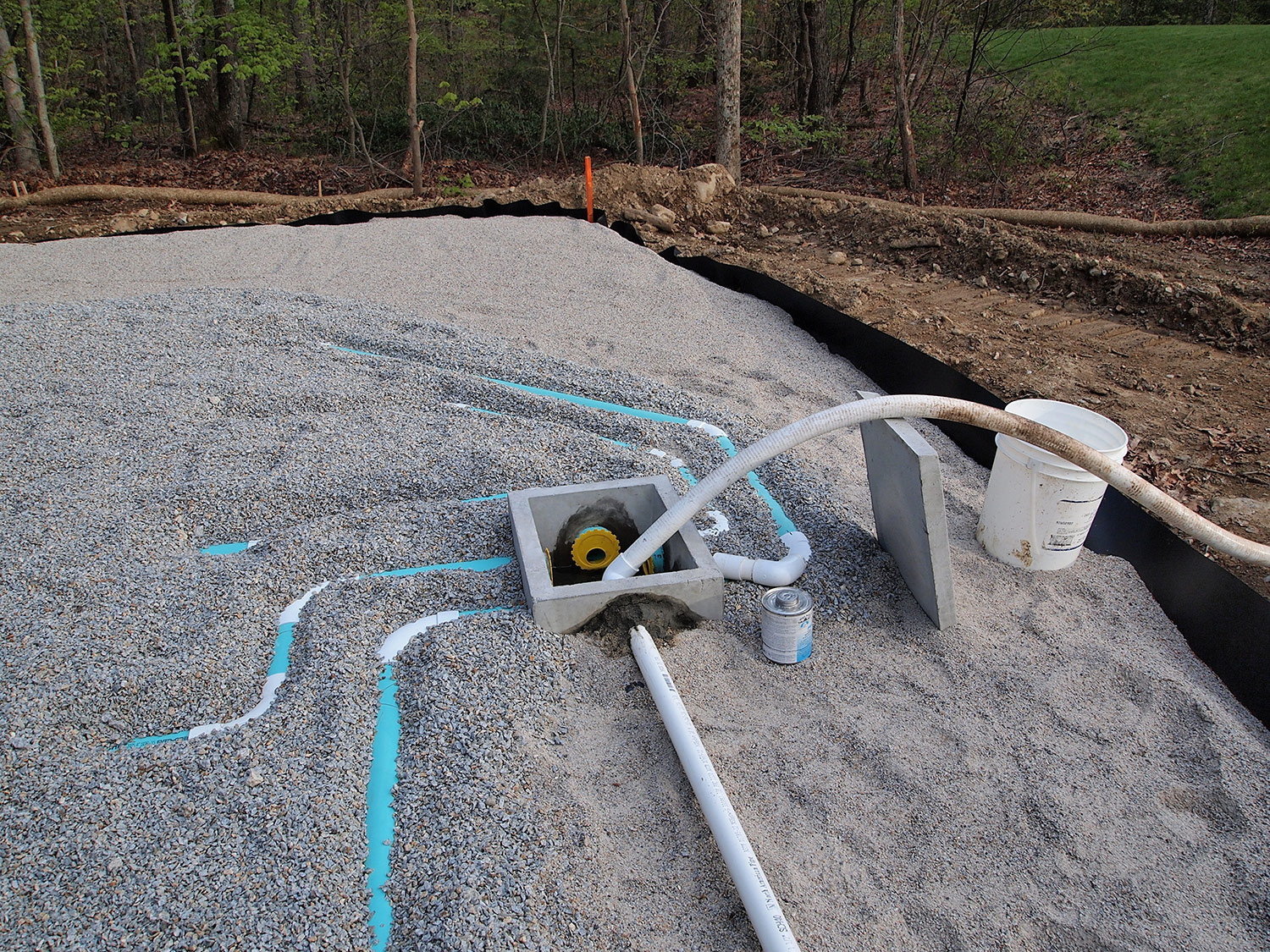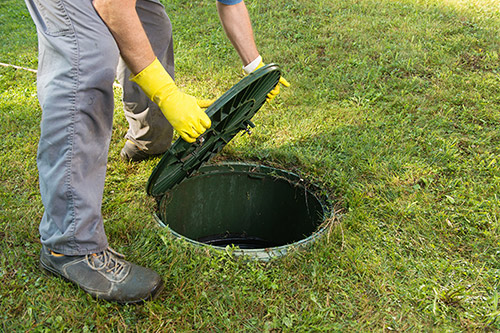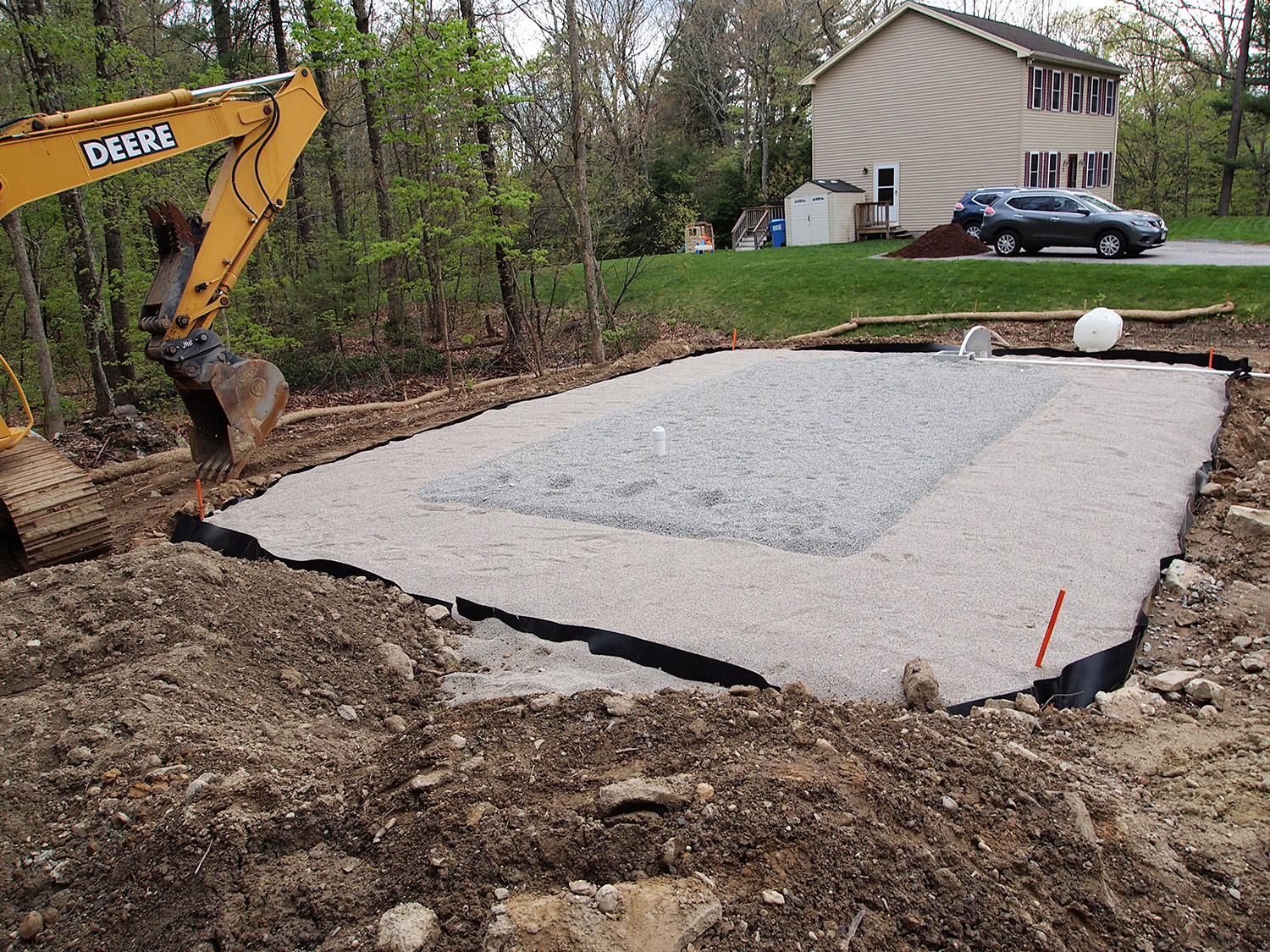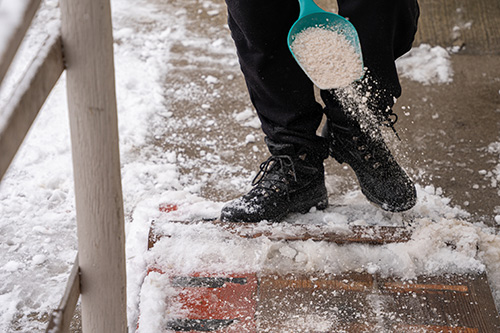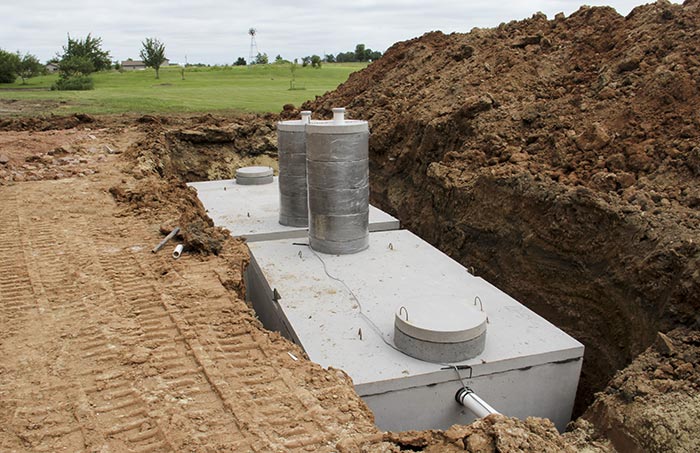
1. Hire an Authorized and Experienced Professional
Even the keenest DIYers should not attempt to tackle a septic system installation by themselves. Septic installation is a complex plumbing project with lots of regulations, and you don’t want things to go wrong when you’re dealing with human waste.
In most states, it's required that you use a licensed professional to install the system, meet building code requirements, secure the correct permits, and pass inspections. Save yourself future headaches and hire a licensed septic installer at the start of the planning process. You don’t want to end up with a fine for a septic system that you’ve unwittingly illegally installed.
Before you hire a septic installer, it’s worth getting project estimates and advice from at least three different pros in your area. Interview them about how they would obtain permit applications, what type of system they suggest, and their estimated timeline for the installation.
2. Check Local Home Septic System Permit Requirements
The cost and application process for a septic system permit varies from one local authority to another. The price of securing the necessary construction-installation permit typically costs around $400, but this figure varies by location. You may also need a permit for pumping and disposing of waste further down the line.
A soil test and a final inspection are often part of the permit process. The soil test (often called a perc test) measures your soil's water absorption rate, and it's important to ensure that the site is suitable for the drainfield. You’ll need to check with your local authority about whether the soil test needs to be carried out by a local authority agent or if you can hire an independent contractor. On the other hand, the final inspection is conducted by local authority representatives.
3. Select Your Septic System Type and Size
There’s a dizzying array of elements to consider when selecting a septic system. Discuss the options with your professional installer to ensure you make the best choice for your home, budget, and lifestyle.
Tank size: For a one to two-bedroom home, you may only need a 750-gallon tank. Some municipalities require all home tanks to be a minimum size of 1,000 gallons, and this is a better size for two to four-bedroom homes. For larger four to five-bedroom homes, tanks as large as 2,000 gallons are available.
Tank material: Septic tanks are commonly made from concrete, but they also come in plastic and fiberglass varieties. Although concrete is vulnerable to cracking, it’s less susceptible to damage during installation.
System type: Most use installers recommend either an aerobic or, more commonly, an anaerobic system. The bacteria that develop in an anaerobic system break down the septic tank waste without the oxygen assistance, and the cost to install these septic systems is around $3,000 to $8,000. Aerobic systems are considerably more expensive, typically running between $10,000 and $18,000 for installation. However, the oxygen-loving bacteria in aerobic tanks break down the waste more efficiently than anaerobic setups, and your future drainfield expenses and maintenance will be less expensive.
4. Establish the Best Location
With the help of a pro, you’ll need to decide where to position your tank, pipes, and the drainfield. The drainfield is a shallow area of covered soil that filters the wastewater as it percolates through the soil, making it safe to be released as groundwater. Here are a few guidelines to follow when determining the best spot for your septic system:
- Don’t select an area where surface runoff can collect. This positioning can lead to drainfield flooding and potential back ups for the septic system.
- Flat areas work best for septic installation and don’t require major excavation. Sloping areas with a gradient of more than 10% don’t make for good installation sites as this can also lead to the collection of runoff and subsequent system back ups.
- Avoid areas with dense tree roots that could damage the pipes.
- Check your local authorities’ regulations for how far away the septic system should be from your home. The minimum distance is typically 10 feet.
- Permeable soil is essential for the installation of a septic system. If the soil is dense and doesn’t have enough grit or sand, this can lead to blockages on the drainfield. Generally, local authorities will want a soil report from a state-certified expert to confirm your soil’s suitability.
5. Complete Prep Work Prior to Installation
By doing the right prep in advance of your septic system installation, you can save yourself headaches further down the line. Consider completing the following preparations:
Decommission the old system: If you’re replacing an old septic system, safe pump out and removal of the sewage in the tank needs to be completed by a licensed professional, following local regulations.
Proper excavation of the tank site: The base under the septic tank should be level, and the hole for the tank needs to be the correct width and depth based on the new tank size. You may need to hire a pro to dig trenches for the pipework.
Prepare for a water outage: For replacement septic system installation, your existing water supply can be out for as many as two to five days. Timelines vary depending on the contractor and the type of system. Stock up on water for drinking, bathing, and washing during this time.
6. Consider Drainfield Landscaping
Consult with your installer about landscaping options in and around your septic system. To avoid causing serious drainage issues, follow the installer’s advice, as well as the following guidelines:
- Plant drought-tolerant native plants with shallow roots, such as grasses or herbaceous
- Avoid planting deep-rooted plants or trees near the septic tank or drainfield
- Avoid installing underground sprinklers
- Don’t use hard landscaping or structures, such as sheds, on the drainfield
For more information, contact Morse Engineering and Construction.
Source: angi.com
